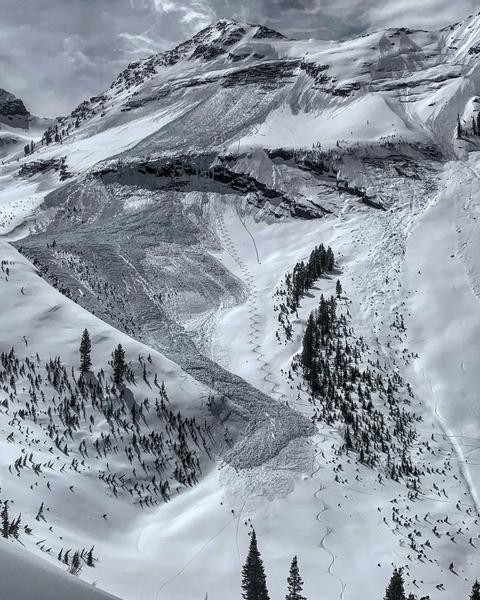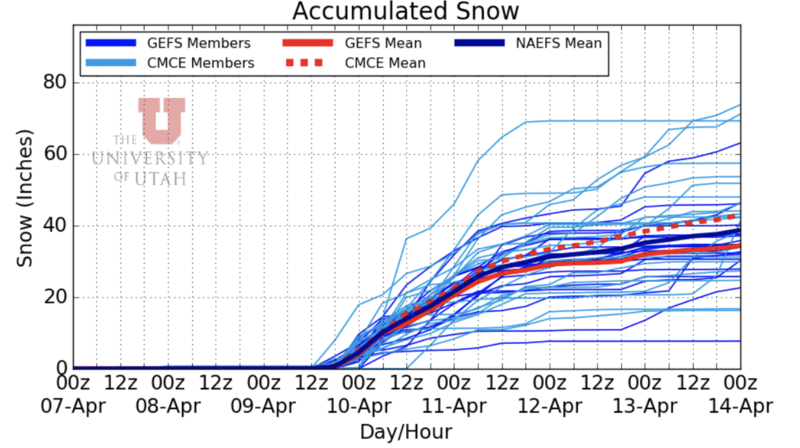Under clear skies the overnight temperatures dropped into the mid twenties above about 7,400' allowing the snowpack to have a decent refreeze. Below 7,400' the temperatures hovered around 32°F. The Park City side as well as Millcreek overnight temps did not drop like in the Cottonwoods and many stations around 8,300' were only dropping into the low 30's °F allowing for a poor refreeze at these elevations.
Winds are currently blowing from the westerly direction at speeds of 10-15 mph gusting into the low 20's at upper elevations. These westerly winds are ushering in some mid to high level clouds for the morning hours before clearing out in the afternoon giving way to sunny skies. Temperatures will rise into the mid 40's °F at 8,500' by mid afternoon.
Yesterday, I said to my partners this was the worst day of the season (powder snob). However, the mountain views, swirly fog, mist, and the good company was 5 stars. Even the upper elevation northerly facing slopes were wet and saturated and riding through this snow took effort. Railroading, mank, glop, sticky, heavy, awful, were all terms used during yesterday's outing. My best guess is it would be possible to find dry settled powder snow on due north facing slopes above about 10,000'.
Each week Greg Gagne puts together "
The Week in Review" can be found by clicking
here. It's a great way to remember what the past week has been like and how we got here.
Yesterday, backcountry observers took note of the easily triggered wet loose avalanches. Most of these were small in size and easily avoidable. However, my group did trigger one wet loose slide on a steep 40° degree NE facing slope at 9,400' in elevation. This avalanche was triggered by a skier doing a slope cut across the top of the rollover. It was large enough to catch, carry and bury you as the debris piled up 3-5' deep against the trees (picture below).













